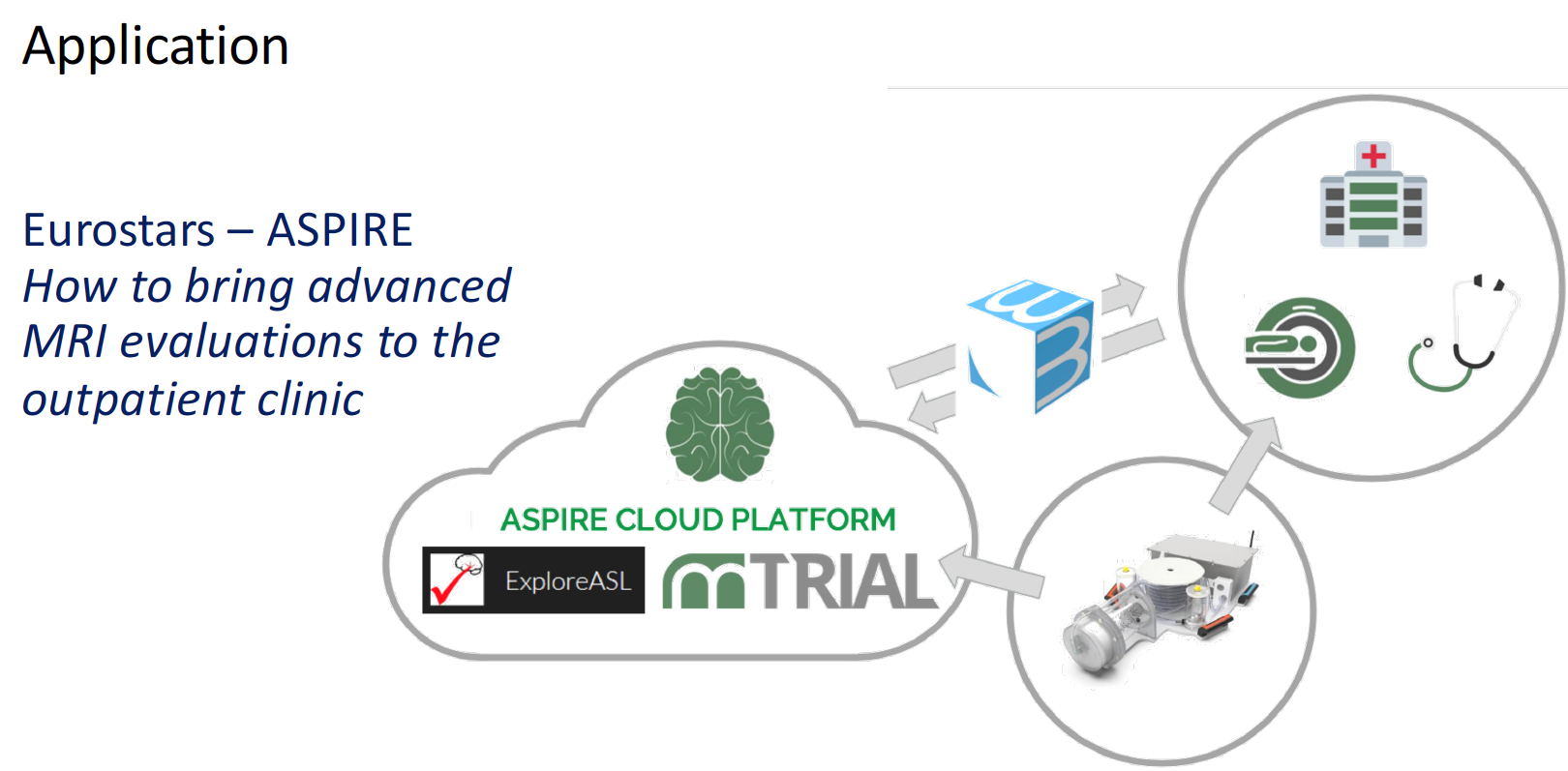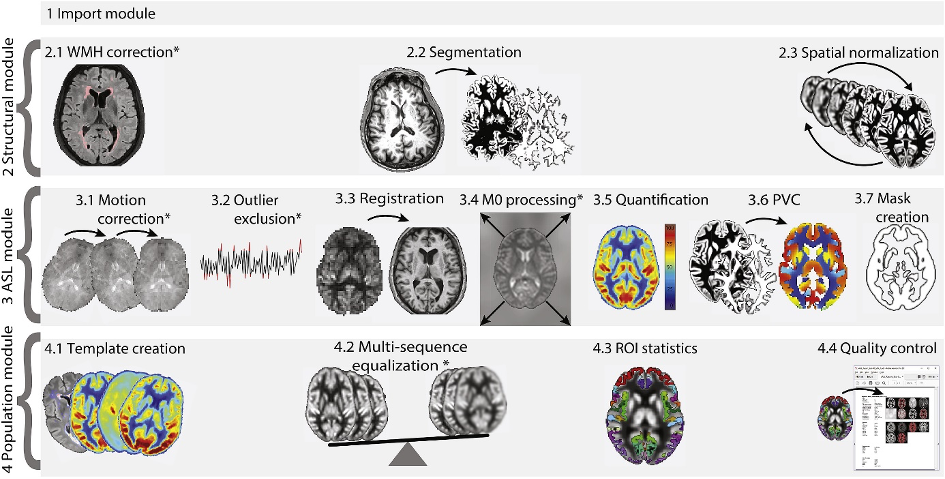To establish the diagnosis of dementia - such as Alzheimer's disease (AD) - and the effect of medication on prognosis, doctors and pharmacists rely on imaging biomarkers. Arterial spin labeling (ASL) is a relatively new MRI measure and potential biomarker that can accurately measure brain blood flow - also known as perfusion - without the administration of contrast agents. As a result, this technique is entirely harmless and can be repeated as often as necessary. Because diseases such as dementia alter brain perfusion, this technique can potentially predict the evolution of the disease. This technique could also be used to demonstrate whether blood flow improves with new drugs developed to alter the course of the disease, and thus to estimate the effectiveness of a drug in the brain.

The ASPIRE consortium combines the industry's latest advances to provide a robust, non-invasive imaging technique for AD prediction, seamlessly integrated into the standard MRI examination routine. Artificial intelligence (AI) methods will be used to analyze localized disease-specific changes in brain perfusion for diagnosis support.
Project partners are MEDIRI GmbH (Heidelberg, Germany), Gold Standard Phantoms Limited (London, UK), and the Amsterdam University Medical Center (UMC), location VUmc (Amsterdam, the Netherlands). All partners bring their specific scientific excellence into the project. Gold Standard Phantoms has developed a unique MRI phantom “QASPER”, which simulates the blood circulation and perfusion in the brain, and will be using it for standardisation of the imaging methods. Amsterdam UMC leads the development of the advanced ASL analysis software “ExploreASL”, which is already widely applied to quantify brain perfusion in 10,000 brain scans in more than 30 studies worldwide. MEDIRI provides the cloud-based medical image platform “mTRIAL”, serving secure image upload, pseudonymisation, and processing in current multi-center clinical trials. Together, the ASPIRE partners join forces to establish integrated Software As A Service (SaaS) as an easy-to-use, secure, cloud-based application, to support the diagnosis of dementia in both clinical trials and daily radiological practice. The three consortium partners are enthusiast and underline the importance of this new technique.

Professor Barkhof - listed by Thompson-Reuter as one of the most influential scientists worldwide- from the Amsterdam UMC says: “ASL has been a promising technique for many years but its clinical implementation has been hindered by lack of reference data and standard processing. I am excited by the prospect that ASPIRE will tackle these issues and allow radiologists to finally take advantage of this beautiful technique”.
Professor Golay, CEO of Gold Standard Phantoms (GSP) and Chair of MR Neurophysics and Translational Neuroscience at UCL, London, UK says: “This project comes at the right time to further GSP’s leadership in the development of Quantitative Imaging Methods and will enable to open the market for our QASPER phantom beyond Academic Research Centres. I am thrilled to be able to collaborate with such great partners on a European level”.
The German CRO MEDIRI will take the project lead in the consortium. Managing Director Dr. Gregori states: “This is a great opportunity to contribute our ASL and image processing expertise to help in the societal challenge of dementia and Alzheimer’s disease. I am excited to work together in this strong consortium. We are looking forward to delivering a diagnostic service solution that really will make a difference.”
ASPIRE is a three years project with a total budget of 2.3 Million euro, co-funded by the EUREKA member countries and the European Union Horizon 2020 Framework Programme.
 Figure that illustrates the ExploreASL processing steps.
Figure that illustrates the ExploreASL processing steps.
About the ASL analysing software: ExploreASL
ExploreASL is a pipeline and toolbox for image processing and statistics of arterial spin labeling perfusion MR images. It is designed as a multi-OS, open source, collaborative framework that facilitates cross-pollination between image processing method developers and clinical investigators.
Read more about ExploreASL on the website or in the publication in NeuroImage called ‘ExploreASL: An image processing pipeline for multi-center ASL perfusion MRI studies’.
